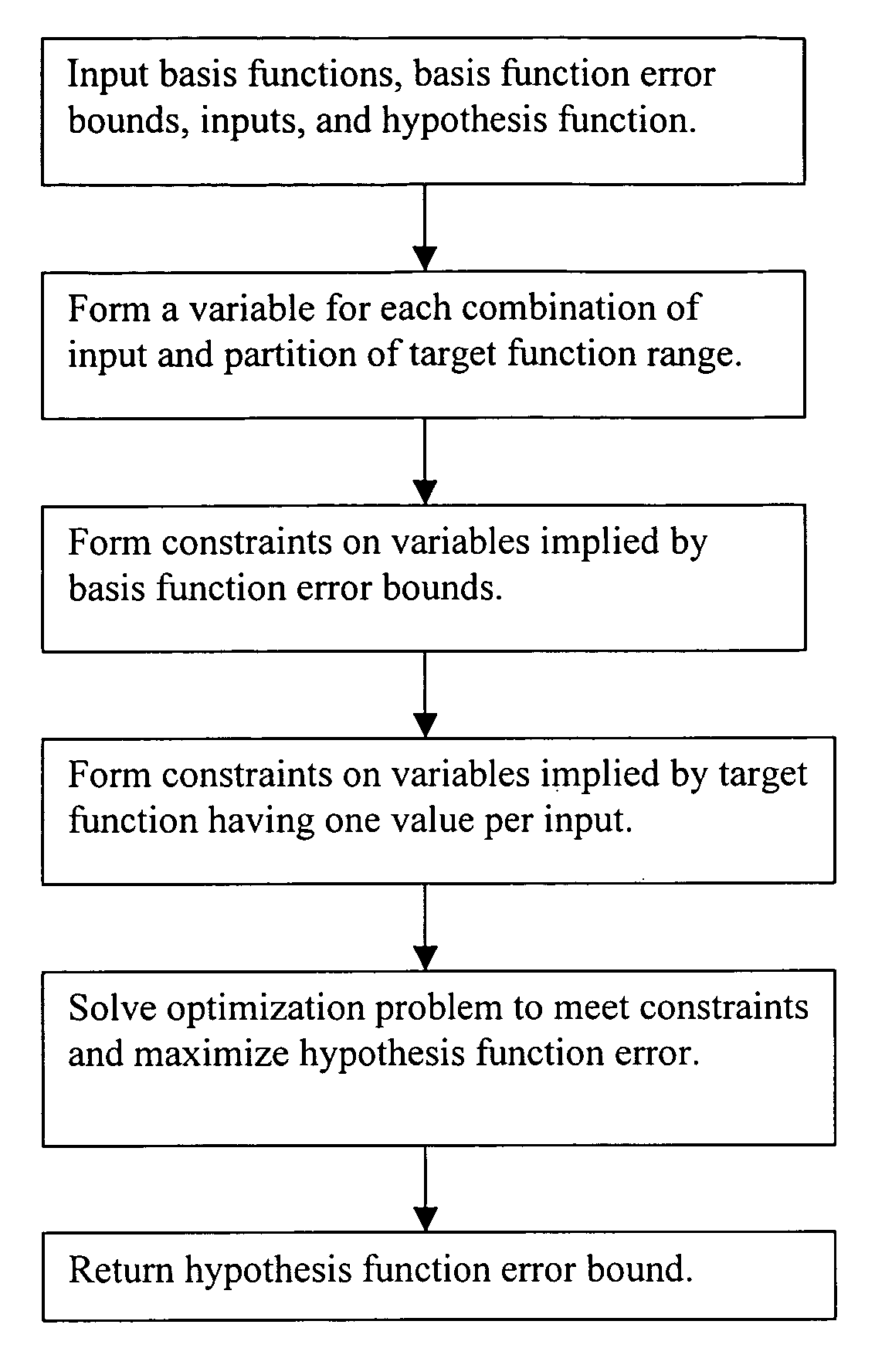Validation of function approximation by fusion
- Summary
- Abstract
- Description
- Claims
- Application Information
AI Technical Summary
Benefits of technology
Problems solved by technology
Method used
Image
Examples
Example
Overview
[0025]In the next two subsections, we present the intuition underlying the validation method developed in this paper, and we review the uniform validation technique used to obtain uniform error bounds over the basis functions. In the following subsection, we develop the linear program to infer hypothesis error bounds from basis function error bounds. We show how the method extends beyond fusion to produce error bounds for early stopping and uniform error bounds over multiple hypothesis functions. Then we discuss the intuition behind the linear program. Also, we extend the linear programming technique by showing how to develop additional constraints. Finally, we present test results comparing bounds computed by linear programming to direct error bounds.
Intuition
[0026]We begin with a simple example to demonstrate the process of validation by inference. Consider a single basis function, g1, and a single out-of-sample input, x1. Use mean-squared difference as the error function....
PUM
 Login to View More
Login to View More Abstract
Description
Claims
Application Information
 Login to View More
Login to View More - R&D
- Intellectual Property
- Life Sciences
- Materials
- Tech Scout
- Unparalleled Data Quality
- Higher Quality Content
- 60% Fewer Hallucinations
Browse by: Latest US Patents, China's latest patents, Technical Efficacy Thesaurus, Application Domain, Technology Topic, Popular Technical Reports.
© 2025 PatSnap. All rights reserved.Legal|Privacy policy|Modern Slavery Act Transparency Statement|Sitemap|About US| Contact US: help@patsnap.com



